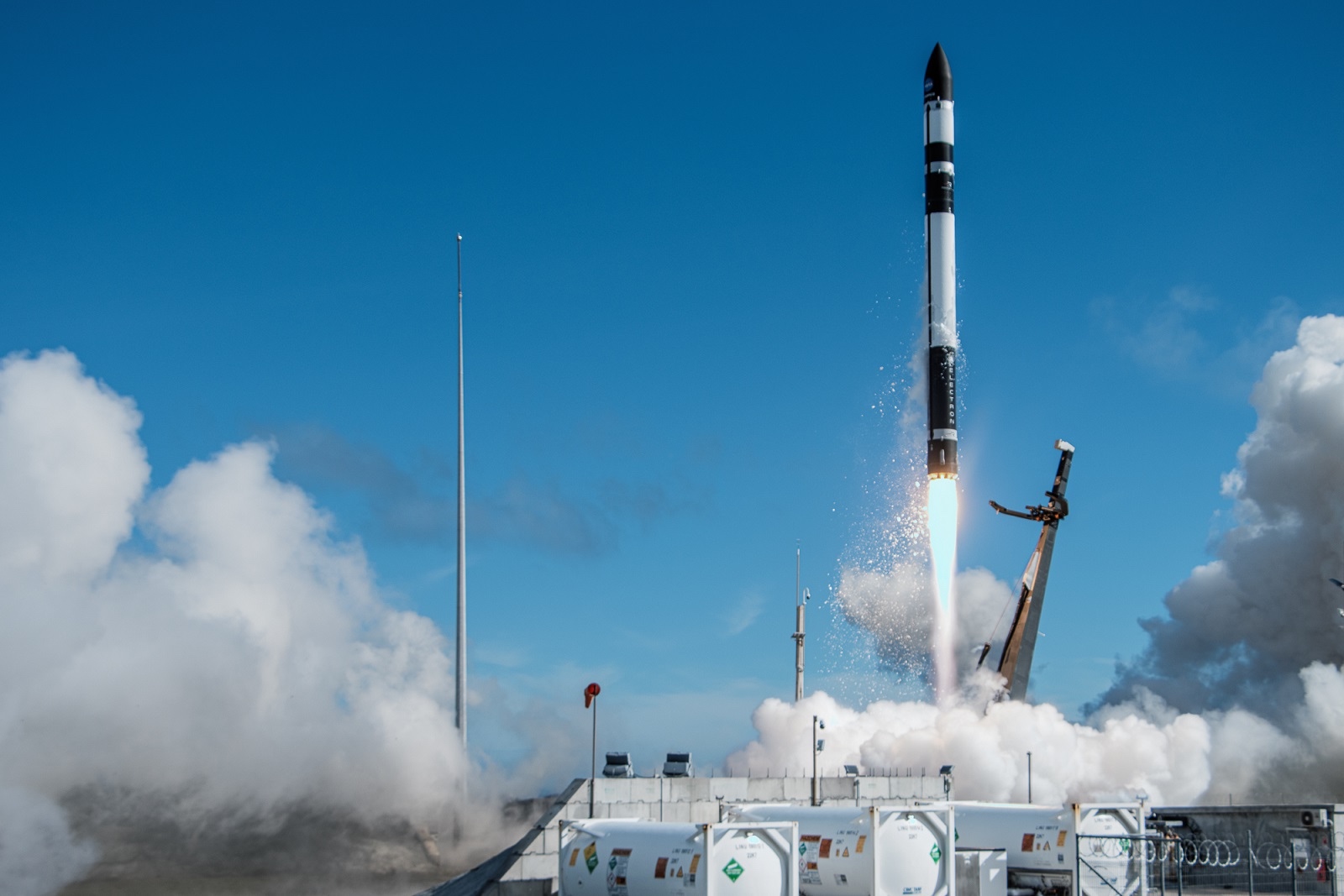WASHINGTON — As other companies suffer technical or financial setbacks, Rocket Lab says it believes it is the leader in the small launch market with little competition.
In a May 9 earnings call to discuss its first quarter financial results, Peter Beck, chief executive of Rocket Lab, said it was seeing increased business for its Electron vehicles given problems other small launch vehicle operators have encountered.
“At a time when we’re seeing many small launch companies fail to service the market, we’re continuing to deliver successful missions for our customers,” he said. “We’re experiencing a correlated increase in launch bookings for Electron in 2023 and beyond from new and returning customers across government and commercial sectors.”
Rocket Lab used the earnings release to announce a new, although minor, contract. NASA signed a contract with the company to launch a constellation of four cubesats called Starling to test autonomous swarm technologies in low Earth orbit. The satellites will be part of a commercial rideshare mission launching in the third quarter. Neither the company nor NASA disclosed the value of the contract.
“They were previously manifested on a different launch vehicle but, due to long delays and continued uncertainty, they have been remanifested on Electron,” Beck said. He did not disclose the vehicle, but Starling was previously scheduled to launch on Firefly Aerospace’s Alpha rocket under its NASA Venture Class Launch Services demonstration contract.
He hinted at the broader struggles in the small launch vehicle sector in his remarks. “Even today, Electron is the only U.S. small launch vehicle to successfully deliver satellites in orbit in all of 2023,” he said. That is reference to launch failures by ABL Space Systems, Relativity Space and Virgin Orbit.
Those failures, which caused Relativity to exit the small launch market to focus on a larger vehicle and helped push Virgin Orbit into Chapter 11 bankruptcy, led Beck to conclude there was not much competition for Rocket Lab among Western small launch vehicle developers.
“On small launch, my personal view is that it’s pretty tough to enter that market at this point,” he argued. “We’ve seen a failure of a lot of small launch vehicles or a failure to deliver over the years and even more recently in more dramatic ways.”
He said the small launch market was a “nice little niche market” for the company. “Electron will probably continue do well there, and I’m not sure that I really see too many small launch vehicles coming on line in the future.”
Rocket Lab has carried out four Electron launches so far this year, including one May 7 that placed two NASA TROPICS cubesats into orbit. The next launch will take place within the next two weeks, carrying the second and final part of TROPICS cubesats.
The company predicts conducting 15 Electron launches this year, a figure that includes both satellite launches and a suborbital variant called the Hypersonic Accelerator Suborbital Test Electron (HASTE) it announced last month. The first HASTE vehicle is undergoing “final preparations” for launch from Launch Complex 2 in Virginia, Beck said. He did not disclose the split between the number of HASTE and orbital Electron launches.
The company reported $19.6 million in launch revenue in the first quarter from three Electron launches, but expects $23 million in launch revenue in the second quarter, also from three launches. Adam Spice, chief financial officer for Rocket Lab, said the company expect the average selling price for Electron missions “to trend towards our standard pricing” through the year.
Beck noted that HASTE missions will typically have a higher price than a standard orbital mission, which he said is linked to extra mission assurance and other analysis. HASTE launches will all take place from Launch Complex 2, which require the company to pay range fees to NASA’s Wallops Flight Facility that are factored into prices.
Spice said that Rocket Lab is planning 20 Electron launches in 2024, with a launch rate increasing to six a quarter in the final quarter of 2024. He declined to give longer-term guidance on Electron launches.
The company is continuing work on the larger Neutron rocket, with Beck showing off progress on vehicle structures, engine development, software and infrastructure, but offering no updates on its overall development schedule.
Beck echoed comments from others in the industry that there is a “crunch” coming in the larger end of the launch market as megaconstellations like Amazon’s Project Kuiper buy up available capacity, particularly in the latter half of the decade. “Our whole approach here and philosophy is to bring Neutron on line right at the peak of that crunch,” he said. “We think that vehicle will do well.”
